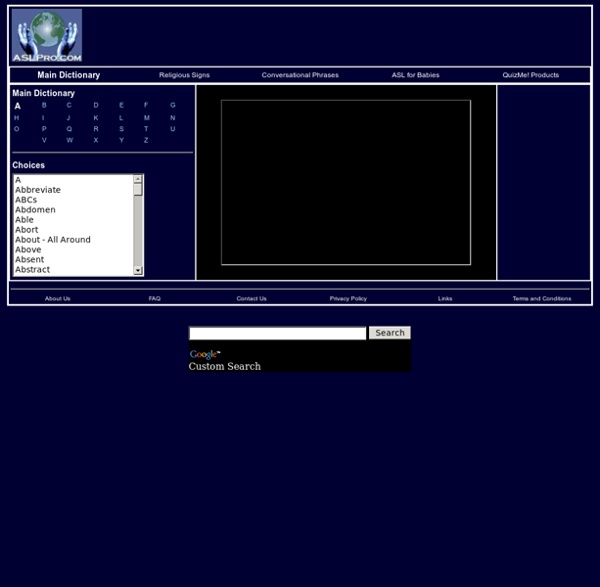



Classroom 2.0 Online Etymology Dictionary Order of Operations The order of operations is a very simple concept, but is vital to correctly doing math. It is simply the order in which you should perform certain operations (like addition) to get the right answer. Take this equation: If you were to simply solve from left to right, the answer would be incorrect. The order of operations will allow you to solve this problem the right way. A popular way of remembering the order is by putting together the first letter of each word: PEMDAS. Let's try solving that equation again, this time using PEMDAS. Step 1) Parenthesis. The whole idea is just to follow the rule: PEMDAS. What if you are given an equation like the one below? Remember, the first step is Parenthesis. By now you should have a basic understanding of the order of operations.
Latin Online: Series Introduction Latin is probably the easiest of the older languages for speakers of English to learn, both because of their earlier relationship and because of the long use of Latin as the language of educational, ecclesiastical, legal and political affairs in western culture. Moreover, we use the Latin alphabet, so that the language is read without difficulty. On the other hand, the sentence structure and number of forms require a great deal of attention, since the words of sentences are placed for their emphasis, rather than in accordance with a pattern like that of the English Subject-Verb-Object sentence. Note: this set of lessons is for systems/browsers with Unicode support and fonts spanning the Unicode 3 character set relevant to Latin (with macrons). 1. The Latin alphabet was taken over from the Greek through Etruscan. English has maintained this order with a few modifications. The chief difference in pronunciation of these letters has to do with the vowels. 2. 3. 4. 4.2 Verbs. 5. Options:
Practicing Sign Language: Find Signs for Kids to Practice Online Designed with Kids in Mind You’ve decided that you’d like for your students to learn some American Sign Language (ASL) signs in the classroom. Maybe it’s for better classroom management, a better student understanding of new vocabulary, to improve their reading skills, or just to learn a fun second language. So, where can your students go on-line to learn some new signs? There are several ASL dictionaries on-line, but they are written for an adult audience. My Baby Can Talk Click on Dictionary of Signs at the top of the page. You may have two minor concerns with using this site with your students. Born2Sign This site also has a video of each ASL sign and a written explanation of how to do the sign. What is a nice plus about this site, however, is that you can either view the entire list of words/signs that they have available, or you can search the signs by different categories; like mealtime, playtime, feelings and more.
Editore Surname Origin & Last Name Meanings. Free Family Name Dictionary with Family History & Genealogy Resources by Ancestor Search "What does my surname mean?" If you have ever asked this question and wondered about the origin of your last name, you will find your surname may answer one of the questions of where your ancestors lived, or what they did for a living, or what was their personality like, or how they looked many hundreds of years ago. Today, a surname, which is also known as a family name and last name, is a hereditary fixed name that you share with your family members. The use of a surname was originally adopted in order to distinguish two individuals with the same first name, and, at first, these last names were not passed down to the next generation. In Europe, the first surnames were first used about eight hundred years ago. Surnames usually originated from one of the five following sources: (although the same surname may have multiple meanings from different sources in different places) Examples: Prefixes Suffixes You can check for alternate spellings of a surname at the soundex (sound-alike) machine.
American Revolution: Prelude to Revolution 1763 - The Proclamation of 1763, signed by King George III of England, prohibits any English settlement west of the Appalachian mountains and requires those already settled in those regions to return east in an attempt to ease tensions with Native Americans. 1764 - The Sugar Act is passed by the English Parliament to offset the war debt brought on by the French and Indian War and to help pay for the expenses of running the colonies and newly acquired territories. This act increases the duties on imported sugar and other items such as textiles, coffee, wines and indigo (dye). It doubles the duties on foreign goods reshipped from England to the colonies and also forbids the import of foreign rum and French wines. 1764 - The English Parliament passes a measure to reorganize the American customs system to better enforce British trade laws, which have often been ignored in the past.